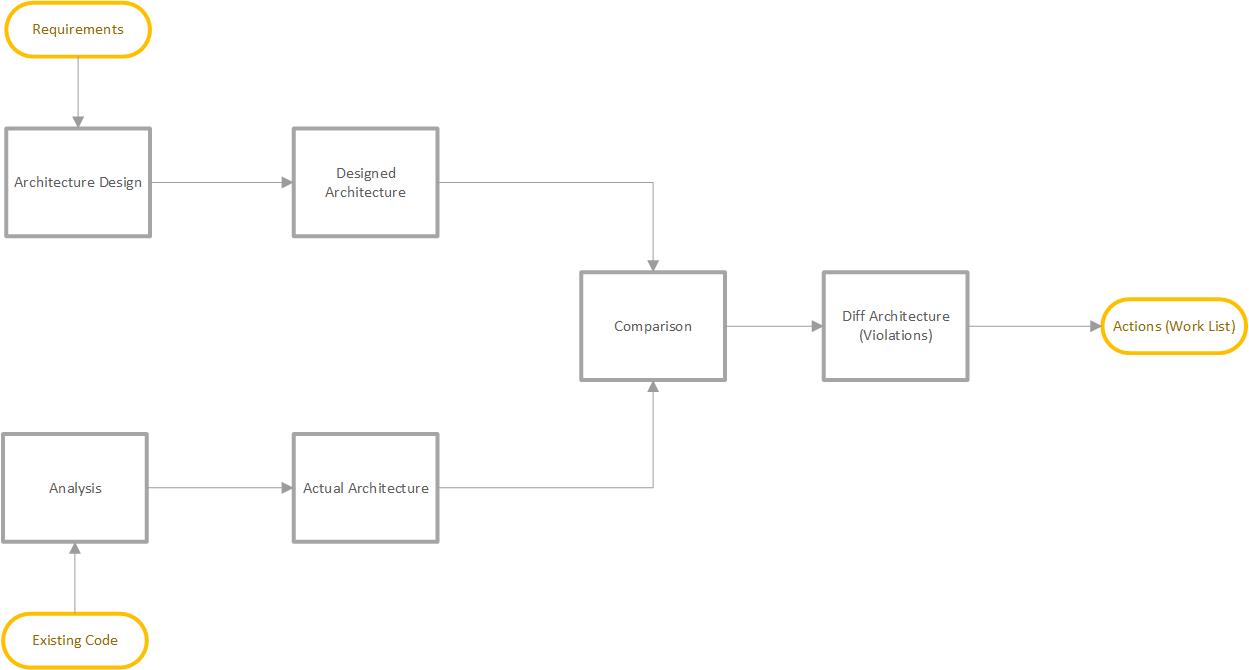Why is software architecture critical?


Why is software architecture so important and how can Lattix help?
Software architecture is a key factor in reducing cost, improving quality, and faster product delivery. Long term, it is key to the success of any high-tech business. Sound architecture, reduces the costs of maintenance, provides clarity of thought, and allows the business or organization to quickly pivot to better meet customer requirements.
If your company has an established architectural process or product-line architecture, it serves as a framework for the project before it even begins. The benefits of having architectural guidelines or a product line architecture in place before the project’s inception are:
- The architecture serves as a guideline for planning and scheduling projects. Having some basic services defined and in place (for example, a single sign-on service) makes building new services faster.
- The architectural guidelines provide a framework for discussing possibilities such as open interfaces (APIs), mobile usage, and open-source components or software. The architecture gives your company a better foundation for proceeding with development.
- The architecture serves as a framework for discussions with subcontractors. Having set architectural guidelines makes their offerings similar and easier to manage and compare.
A good Architecture reduces maintenance costs
Good architecture means that changes have a limited impact on other parts of the system. The impact of change can have a large effect on maintainability. The architecture needs to be documented and communicated to all stakeholders. Once the architecture has been designed and agreed upon, the development effort must sustain it. Building the software as part of a CI/DevOps pipeline with the correct tools (like Lattix) can help ensure that the architecture remains clean during development.
Lattix will impact your maintenance costs (estimates are as much as 70% of development budgets are used on maintenance). With a DSM of your system, your developers can conduct critical impact analysis. That will make them more productive and eliminate problems introduced during development. It will also minimize unit testing. If anything does creep in, our detection software will flag it and report it to you.
A good architecture supports impact analysis
Good architecture should allow us to reason about the impact of making a change before it is undertaken. A good architecture identifies the major components and their interactions and the dependencies between components.
As an example, a change to a requirement can be analyzed in terms of the impact on the components that collaborate to realize this requirement. Similarly, the impact of changing a component can be analyzed in terms of the other components that depend upon it.
Such analyses can greatly assist in determining the cost of a change, the impact that a change has on the system, and the risk associated with making the change. This information is then used when prioritizing changes and negotiating those changes that are absolutely necessary.
Lattix provides easy and deep impact analysis. Our tagging features will provide quick visibility to separate only the impacted items from the rest of the system.
Architecture addresses system qualities
The functionality and purpose of the system are driven by the architecture. The relationships between the various elements that comprise the architecture determine success. It is through architecture that the system’s qualities and business needs are achieved. Things like code quality, bad dependencies, bugs, and maintainability cannot be achieved in the absence of a unifying architectural vision, since these qualities are not confined to a single architectural element but rather permeate the entire architecture. For example, in order to address security requirements, it may be necessary to consider the nature of the communication between components and introduce rules on how they relate.
Lattix can help by instantly helping you identify qualities in your system and the relationships that they have with other qualities. You can set rules on these qualities to ensure they are not violated in development or you can perform “what-if” scenarios on these qualities to determine any potential changes and estimate the impact and project costs.
Architecture drives consensus
A good architecture drives consensus among the people most interested in delivering results. To agree on the needs of the system, a good architecture provides a vehicle for enabling debate about the system solution. In order to support such debate, the process of architecting needs to ensure that the architecture is clearly communicated and understood. An architecture that is effectively communicated allows decisions and tradeoffs to be debated, reviewed, and agreed upon. Conversely, an architecture that is poorly communicated will not allow such debate to occur. Without such input, the resulting architecture is likely to be of lower quality.
Additionally, the architecture can drive consensus between the architect (and his vision) and new or existing members of a team. The architecture must be effectively communicated for this benefit to be achieved. Development teams with a clear vision of what they are implementing have a better chance of implementing the product as desired.
With this in mind, it is important to document the architecture appropriately, and this is a primary responsibility of the architect. Similarly, the creation of an architectural proof-of-concept is an excellent way to demonstrate that the architecture either does or does not, meet the stated requirements.
Communication is a core focus of Lattix. Helping your technical and non-technical staff or peers understand the current state and share in the challenges and solutions will provide a better result. Lattix can provide an abstraction view in the form of conceptual architecture as well as the crystal clear view of a DSM.
Architecture helps manage complexity
Many systems start simple and clean. As the company and application evolve, the systems become more complex. The complexity needs to be managed. Since architecture focuses on only those elements that are significant, it provides an abstraction of the system and therefore provides a means of managing complexity. Also, the process of architecting considers the recursive decomposition of components. This is a well-accepted way of taking a large problem and breaking it down into smaller more manageable ones.
DSMs were developed to deal with massive complexity. The science's basis is reducing complexity's negative result while maximizing modularity. We have successfully applied our approach to systems with more than 100,000 elements and 17 million lines of code.
The architecture supports the planning process
A strong architecture supports a number of disciplines. First, it supports the design and implementation activities. Many other benefits are those related to the support provided to project planning, and project management activities in general: specifically, scheduling, work allocation, cost analysis, risk management, and systems development. The architecture can support all of these concerns. Much of this support is derived from the fact that the architecture identifies the significant components in the system and the relationships between them.
The architecture is vital in the cost estimation for the project. Most obviously, the duration of the tasks and the resources allocated to each will allow the cost of labor to be determined. The architecture can also help determine costs related to the use of third-party software or tools required to support the development effort.
Another aspect of quality architecture is to identify and manage technical risks associated with the project. The understanding of technical risk involves the prioritization of each risk and the identification of an appropriate risk mitigation strategy.
The Lattix DSM view will answer the questions surrounding the time and resource issues surrounding a project delivery. The specific questions that you have can be answered with the ability to determine the cost and return from a proposed project.


.jpg)